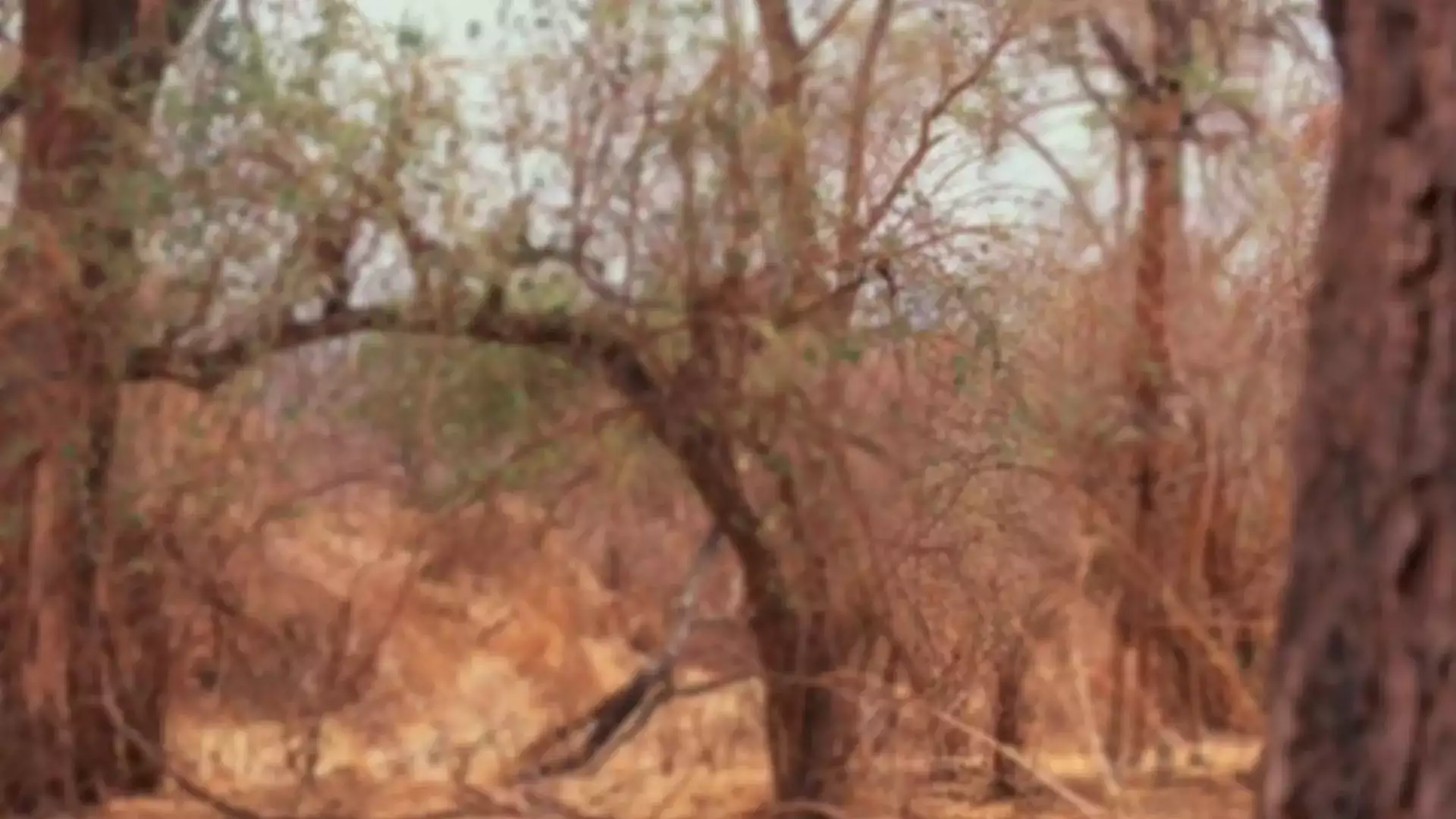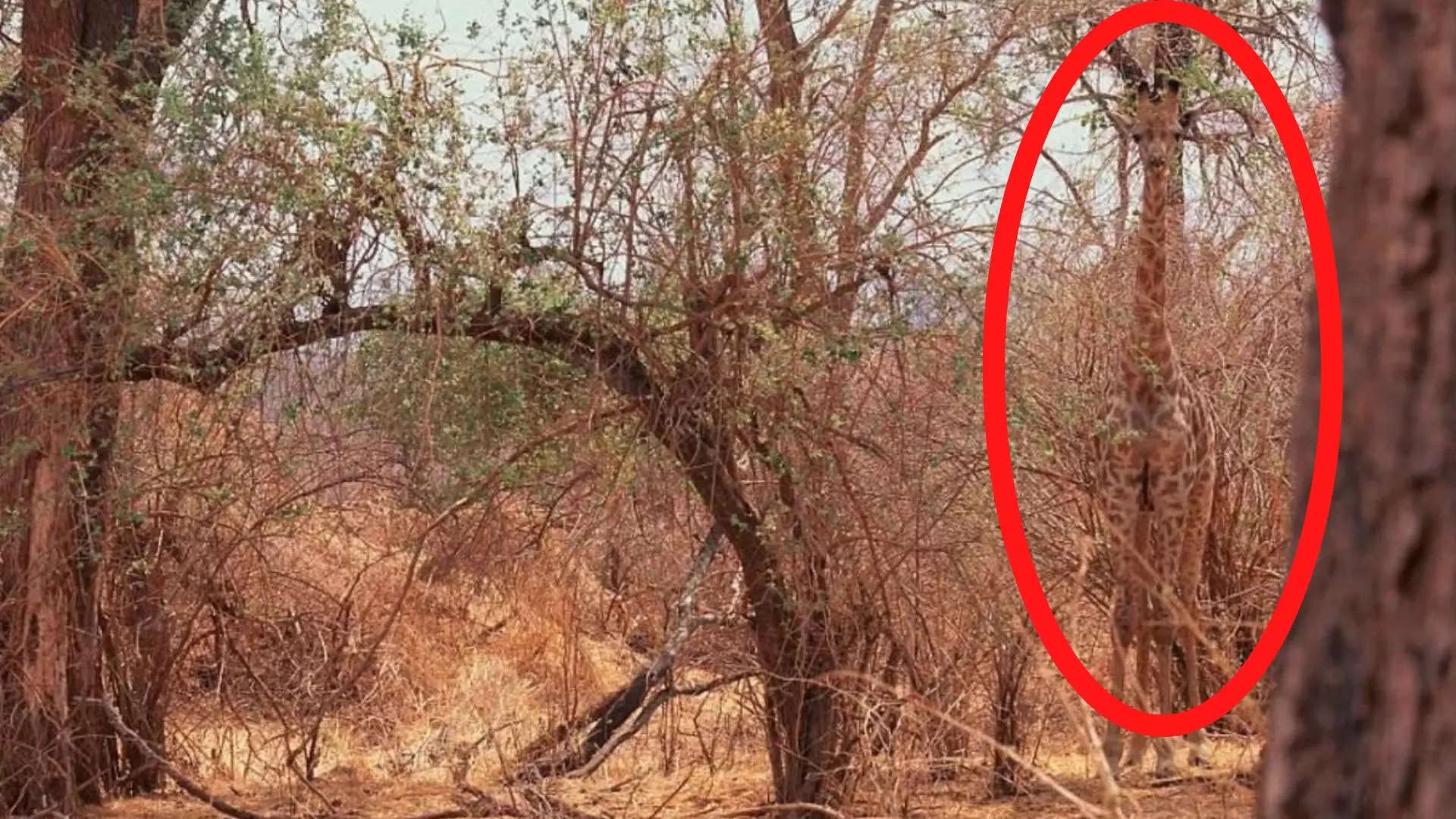
Spot the Giraffe in this Picture
The human mind can be tremendously captivated by an optical illusion. Deceptive sights are as old as time and appear naturally in nature.
In fact, optical illusions play a crucial role in evolution, as camouflage allows numerous species to conceal themselves and predators to wait in ambush until their prey approaches without suspicion.
By Mind Oddities, employing these traits is a task.
The rules are rather simple: Examine the surrounding area to see if you can locate a giraffe in this shot.
It appears to be a hazy photograph of a savannah setting, and while it may not appear to be much, a giraffe is actually concealed there. However, this is still a relatively simple puzzle.
Are you able to locate the huge ungulate in this optical illusion?
If you are disoriented, here is a hint: Look for a location where an animal with a giraffe-like neck may mix in with the photograph.
That only leaves tree barks reaching over the top edge of the image, as the large individual was readily discernible against the clear sky during the day.
Answer to the giraffe optical illusion
In the right-hand portion of the shot, the giraffe is nearly aligned with a tree in the backdrop. However, its unique patches are a dead giveaway.
How long did it take you to distinguish the giraffe from the background? On average, it took puzzlers 6 seconds to see this.
You just have six seconds to see the giraffe that is staring right at you, and it is right in front of you.
The idea of an optical illusion has implications beyond the realms of psychology and leisure, specifically in the field of evolutionary biology.
Several species of animals are able to protect themselves by camouflaging their bodies, which also enables predators to hide and wait in ambush until their unwary prey approaches them.
Giraffes have a long history of possessing this capacity. In point of fact, one of these beasts with hooves was hiding in plain sight.
An optical illusion has the potential to hold a person's attention for a significant amount of time.
The use of misleading imagery is as old as storytelling itself and occurs frequently in the wild.
In point of fact, the idea of an optical illusion has been shown to be of tremendous significance to the process of evolution.
Camouflage, for example, enables a variety of animals to conceal themselves from predators and permits predators to wait in ambush until their unwary prey approaches them.
The utilization of those qualities presents a difficulty for Mind Oddities.
The following are the rules that must be followed:
Take a good look at the picture and see if you can find a giraffe hiding anywhere in it.
It looks like a hazy photo of a savannah environment, and while at first glance it might not appear very interesting, there is actually a giraffe concealed within the image.
Despite this, it shouldn't take too much time to solve the challenge.
Are you able to spot the huge ungulate that is hidden behind this optical illusion?
If you're not sure where you are, here's a hint:
Find a place in the picture where an animal with a neck as long as a giraffe's might easily blend in with the background.

Because of this, the only thing that is visible above the top of the picture are tree barks, since the big guy would have been easy to notice against the blue sky during the day.



